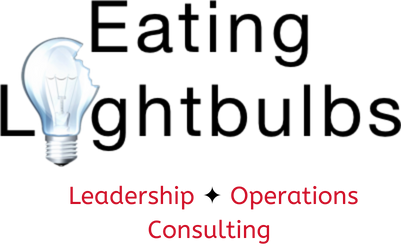A Lean, Mean, Innovation Machine!
Want to increase innovation? Employee engagement? Lower turnover and create a workforce that is focused on solving problems. In his new book, The Bright Idea Box: A Proven System to Drive Employee Engagement, Jag Randhawa tells us how.
If you only have time to read one book and your business needs a booster shot for innovation and engagement, this is the book you need.
This photo was shared under the Creative Commons Attribution License and has been taken from Tsahi Levent-Levi’s Flickr photo stream.
It’s a lean book that is easy to read. It has just enough information for anyone to understand why building a bottom-up innovation program is important, how to get buy-in, how to implement the program, and ensure its success! Better yet, it can be done with the smallest of budgets.
I’ve read many books on innovation and employee engagement, but this is the first one that ties it all together and gives us the plan to make it happen in our businesses.
This is a “how to” book with just enough theory to launch the innovation program.
I work for an internet marketing startup, and after reading the first chapter, I was going to use the information in this book to inject innovation into our team’s DNA. I’m going to create innovation training in conjunction with our Bright Idea Box Program, based on this book and my other research, books like: Where Good Ideas Come From: The Natural History of Innovation by Steven Johnson, and The Progress Principle: Using Small Wins to Ignite Joy, Engagement, and Creativity at Work by Theresa Amabile and Steven Kramer.
The book is written in 3 parts:
Part One - The Innovation
Part Two - The Program
Part Three - The Engagement
Jag breaks down business innovation into four categories:
Revenue Generation
Cost Reduction
Business Process
Business Model.
“The results of innovation can emerge as a new or improved product, a new management strategy, lowered cost, added convenience for customers, or selling existing products in new ways or to new markets,” says Jag. When my team talks about innovation, it normally pertains to new products, niches, or marketing ideas. We overlook some places that have huge potential, like improving business processes.
Things like business processes and adding value for customers often get overlooked because they’re not sexy.
How much better would things work if everyone was thinking about improving the way we work instead of just the people whose job it is? Reframing innovation like this is hugely helpful.
Taking advantage of research in neuroscience, Jag uses chunking to help us to remember the steps necessary to implement our innovation program using the acronym MASTER:
Mobilize- Get people involved
Amass- Collect Ideas
Support- Assuring commitment
Triage- Screen Ideas
Execute- Implement Ideas
Recognize- Recognize team members
Jag says, “Innovation = Invention + Execution + Adoption” in other words, ideas without implementations are like seeds that get planted but never watered and tended to. It’s not enough to have good or even great ideas. They have to be captured, evaluated and, if they are worthy, implemented.
The author shows us how to get buy-in from executives, managers, and team members. He suggests we should hire partners, not employees. This is crucial for maximizing team engagement.
Question: In a bacon-and-egg breakfast, what’s the difference between the Chicken and the Pig?
Answer: The Chicken is involved, but the Pig is committed!
One of the best ways to engage team members is to raise their level of commitment. Be the pig! Be committed. When people are empowered and supported to make potentially staggering contributions to the company's success, they are much more likely to be committed.
The author also gives us a great way to filter out ideas that don’t add value to the business. When an idea is submitted four questions must be answered:
1. What is the name of the idea:
2. Description:
3. Benefits:
4. Cost-Benefit Rationale:
The first two are no-brainers, the third is necessary, and the last is gold! Requiring your team to answer these questions makes them think their idea through and sends half-baked ideas back for more development. Anyone who participates in the program will learn how to do a cost/benefit analysis. In other words, they will learn to think like business owners!
This is easily the best business book I’ve read in the last year. If your team lacks engagement, like 74% of employees in the United States, and innovation is something they hear mentioned in the news, you might want to give this book a read and put its ideas to good use.


